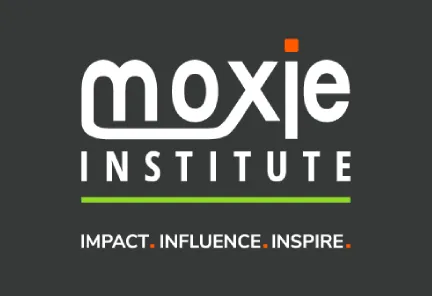Introduction: The Championship Mindset for Speech Success
Imagine: You are backstage, moments away from going on stage for the biggest presentation of your life. Your heart races like a sprinter at the line, your palms have the texture of a slug, and countless eyes bristle with the expectation you’ll deliver. What distinguishes the speakers who flourish in these conditions versus those who fail?
The solution lies in how to prepare for a speech — the same way a top athlete trains for a championship: using the scientific, systematic process that the entire field of human performance has advanced from last century to today. Here at Moxie Institute, we’ve learned from our work with Fortune 500 executives and high-stakes presenters that the best speakers don’t just rehearse their content—they practice their minds, bodies, and performance systems like professional athletes getting ready for the Olympics.
Knowing how to prepare for a speech doesn’t mean learning words by heart or polishing slides. It’s about fostering the mindset, physical edge, and strategic game plan that turns nerves into excitement and doubt into unwavering confidence. Through our neuroscience-based coaching approach here, we’ve already trained thousands of professionals to prepare speeches with performance psychology techniques that are based in science, not woo-woo, and have been tested in corporate boardrooms and championship arenas.
In this all-encompassing guide, you’ll learn the same step-by-step approaches we use with our top-tier clients—everyone from TED speakers to C-suite executives—to prep for presentations that could make or break careers. If you’re getting ready for a keynote, investor pitch, or team presentation, these athletic-based approaches to preparing will help you show up at your best when it’s all on the line.
Why Athletes and Speakers Need the Same Mental Training
The similarities between elite athletic performance and compelling public speaking skills go further than most of us realize. Each demands split-second execution under extreme pressure, the capacity to perform in spite of distraction, and the mental strength to sustain excellence when most is on the line.
The Neuroscience of Peak Performance Under Pressure
Neuroscience research tells us that high-pressure performance situations light up the same neural pathways, whether you’re giving a talk or competing in the Olympics. When you’re flooded with stress hormones, the prefrontal cortex—which is the brain’s command center for complex thinking and decision-making—can be overpowered, leading to what athletes call “choking” and what speakers know as “blanking out.”
In our experience consulting with senior executives on high-stakes presentations, we’ve seen that the speakers who always come through in this kind of clutch have something in common neurologically with top athletes. They’ve taught their brains to understand arousal as teetering nearer to excitement than anxiety, preserved cognitive flexibility while under stress, and implanted automated programming that works even when they can’t think clearly.
Studies by Dr. Sian Beilock at the University of Chicago have shown that performance anxiety impairs working memory—the mental scratchpad that allows us to hold and process information. This is a reminder for speakers that under-training can increase the likelihood of forgetfulness, the loss of direct connection of thought in-the-moment, and the reduced capacity to adjust to audience responses—precisely the scenario that a decent athletic-style training process can help avoid.
Performance Psychology Principles for Speakers
Performance psychology has identified the essential mental skills that distinguish top performers from mediocre performers in all domains. These are the keys on which we base our public speaking training at Moxie Institute:
Mental Practice and Mental Imagery: Elite athletes spend 20-30% of their training time envisioning a practice or competition. Likewise, peak performers who speak under pressure regularly rely on visualization to rehearse not only their material, but how they’ll feel emotionally and physically, plus their bounce-back strategies should something unexpected occur.
Regulation of Arousal: Taking control of the physiological arousal in the body is key for athletic and speaking performance. We educate our clients in breathing techniques and sports-psychology-based exercises like progressive muscle relaxation to heighten mental states conducive to performance.
Attention Control: Athletes need single-minded concentration to exclude distractions. Those delivering a presentation have the same issues when the audience is restless, when tech goes wrong, and when we worry about what we look and sound like. Selective attention enables speakers to remain connected to their message and audience despite outside influences.
Self-Talk: What you are saying to yourself in your mind is a key element of performance. Negative self-talk can lead to an anxiety-performance cycle downward, whereas positive, instructional self-talk boosts confidence and performance level.
Quick Takeaways for Athletic-Inspired Speaking:
- Mental training accounts for 50% of peak performance in both sports and speaking
- Responses to stress can be taught and enhanced, not just managed
- Organized preparation reinforces confidence, even when the heat turns up
- Recovery strategies are as important as prevention strategies
Phase 1: Building Your Foundation Like a Champion
Just as athletes first master basics before learning game plans, preparation for speechmaking begins with the establishment of a solid base. This is content learning and the preparation of the physical body—the grunt work of an athlete’s conditioning and skill development.
Content Mastery: Your Playbook
There’s no professional sports team where the star players don’t understand the plays or know the playbook. Likewise, speakers who perform well under pressure have reached what we refer to as “unconscious competence” with their content—they know their material so well that when they go on auto-pilot, it leaves your conscious mind open to connect and adapt to the audience.
The Layered Learning Approach: Instead of trying to memorize scripts, we teach our clients to learn content in layers. Begin by mastering logical organization and major transitions. Second, make yourself familiar with your opener, closer, and any important stats or quotes. Third, build versatility in each section without challenging your core message platform.
Content Stress-Testing: Elite athletes train harder than they play, so when their playing gets tough, they make it work. Also, we suggest you rehearse your speech while working with conscious distractions—noise, interruptions, or time constraints. This helps you to be more robust and confident about keeping your message clear in spite of people and situations.
Storytelling Integration: Communication science tells us that stories help to make content more memorable and emotionally provocative. Integrate your key points into stories rather than simply reciting them so that you have natural memory hooks—you’re much more likely to remember a vivid story than a bullet point.
Our experience working with Fortune 500 executives has revealed that speakers who achieve mastery of their content generally need to give 15-20 full run-throughs of the presentation before they can reach this level of unconscious competence. This may sound like more than enough, but remember that professional basketball players throw thousands of free throws to become automatic in game-time pressure situations.
Pro Tip: Get yourself on video giving your speech in different emotional states—tired, pumped, frustrated, relaxed. It indicates which parts require more support and gives confidence that you’re capable of delivering when not in the perfect headspace.
Physical Preparation Strategies
Athletes know the value of cross-training and that to perform at their best, they must keep their bodies in shape. And so do speakers who improve through specific, focused physical training that increases vocal strength and power, stage stamina, and stress resistance.
Breath Training for Performance: How you breathe can mean the difference between good and bad vocal quality, mental clarity, and anxiety levels. We instruct our clients to adopt diaphragmatic breathing, which serves as a base for strong voice delivery but also works on the parasympathetic nervous system, helping them decrease their feelings of anxiety.
The yoga-teacher favorite “4-7-8” breathing technique, which is supported by research on reducing stress, involves inhaling for 4 counts, holding for 7, and exhaling for 8. Do this every day to develop breath control and make a helpful tool for dealing with pre-speech nerves.
Vocal Conditioning: Just the way runners work out their legs is the way speakers exercise their vocal muscles. Daily vocal warm-ups, articulation work, and projection training help you develop the physical control that will be required when you have long presentations to make. They also protect you from vocal fatigue, which will take away from the power of your message.
Posture and Movement Training: Your body language gives confidence away the moment you step into the room. We draw on theater training and movement coaching to assist speakers in developing commanding presences that are grounded in authenticity. This includes not only how to use space effectively, gesture with purpose, and sustain energy over long presentations.
Recovery and Maintenance: They say that elite athletes have the ability to recover as hard as they train. Our speakers derive the same benefits from having focused on hydration, sleep quality, and stress reduction in the 24 hours leading up to their high-stakes presentations. Even the tightest content preparation can be derailed by weak physical preparation.
Try It Yourself Exercise: For one week, spend 10 minutes a day rehearsing the opening of your presentation while taking light physical exercise—walking, yoga stretches, even a few gentle jumping jacks. This develops the capacity to keep content fluent while handling physical arousal and associates movement with material.
Phase 2: Mental Conditioning and Visualization
Mental preparation is what takes good speakers and makes them great. This phase is about developing what elite athletes spend years honing: the psychological skills that enable peak performance under pressure.
Advanced Visualization Techniques
Visualization is not just imagining success; it’s a systematic mental rehearsal process that forms neural pathways equivalent to those formed by physical practice. In our practice with high-stakes presenters, we have observed that speakers who have trained in structured visualization have noted significant benefits in confidence, quality of delivery, and response to stress.
Multi-Sensory Mental Rehearsal: Good imagery can involve all sensory systems, not just visual images. Imagine yourself giving the performance and feel the microphone in your hand, feel the heat of the stage lights on you, hear the hands clapping, and remember the taste of the water. This full-body sensory rehearsal conditions your nervous system for the real thing.
Scenario Planning Using Visualization: Athletes imagine both successful performance and potential problems that might arise, and then mentally practice how they will respond. Use this in your presentations by imagining different scenarios in your head—the computer won’t work, a difficult question, someone heckling you—and then learning the responses in your head and body.
The Performance State Anchor: This is a specific physical sensation or mental image that represents your best performance state—it might be a feeling of calm confidence or a picture of yourself speaking with power. During visualization, you can practice accessing this anchor and then use it before and during the presentation to go quickly into peak performance mode.
One CEO we coached preparing to present to a critical investor was able to visualize what might happen in a Q&A session that could decide his company’s future. He then spent 20 minutes every day for two weeks practicing visualizations of himself answering questions in a range of scenarios, how he would feel, and answering confidently. At the moment of truth, faced with a surprisingly aggressive question from a prospective investor, he effortlessly slipped into his well-practiced response structures and landed the funding.
Visualization Progressive Approach: Start by visualizing successful smaller talks or practice sessions and then build up to the main presentation step by step. This is a gradual process to establish faith, so don’t jump into high-pressure visualization scenarios right from the start.
Cognitive Rehearsal Methods
Beyond seeing the future, cognitive rehearsal should also include rehearsing the thinking you will do and decisions you will make in front of an audience. This kind of mental training enhances what psychologists call “cognitive flexibility”—the ability to see and leverage novel connections and patterns in the world.
If-Then Planning: Studies on implementation intentions demonstrate that planning what to do in anticipation of potential obstacles increases the likelihood of implementing the plan. Form some “If-Then” plans: “If the projector breaks, then I’ll move forward with confidence, using just the language of my descriptions.” “If you ask a question I cannot answer, I’ll say, ‘You know what? That is a really great question, and let me get back to you after this presentation.'”
Attention Training Exercises: Focus on staying focused on one or two main thoughts while controlling distraction. A good practice to develop this skill is to read out loud while listening to light music and increase the volume of the music until you are able to project your message even when exposed to significant noise.
Emotional Regulation Rehearsal: Think of the emotions (anxiety, irritation, excitement) you could be caught by in a presentation and practice being able to stay core-message focused and consistent in your delivery despite that emotion arising. It’s not about repressing emotions, but it is a skill—the skill of being able to raise your game regardless of how you’re feeling emotionally.
Decision Point Mapping: Pinpoint critical moments in your talk where you are going to have to make a real-time decision—whether to alter the pace based on how engaged your audience is, choose between example A or example B, or decide how much time to leave at the end for audience Q&A. Practice these inflection points and make the decisions automatic in your head.
Pro Tip: Athletes often engage in “pressure training,” in which they practice under artificial strain. Apply this principle by training yourself to deliver your message while friends berate you with hard questions, while racing a clock, or even during physical tasks. This instills absolute confidence to perform under any and all conditions.
Phase 3: Game Day Preparation and Execution

The last stage of athletic-inspired public speaking tips focuses on super-charging your performance in the critical hours leading up to and during your presentation. Here is where thorough preparation reveals itself in the form of strong, self-assured delivery.
Pre-Performance Routines
Successful athletes use consistent pre-game routines to maintain optimal performance states. Just as with athletics, cultivating a solid pre-speech routine provides mental stability and security in the spotlight moments.
The 24-Hour Protocol: In the 24 hours leading up to the moment you will be presenting, ensure that you have a routine of particular actions that you undertake to get your mind and body in the best possible shape. That means running through key messages (not maniacal rehearsal), getting a little light exercise, staying well-hydrated, and avoiding alcohol or high doses of caffeine.
Morning of Preparation: Begin your presentation day with habits to boost confidence and energy. Many of our students do a mixture of light exercise, positive visualizing, and looking over only their opening and closing—not revising the content the day of the show. It has been demonstrated that moderate physical activity can enhance cognition for several hours, so perhaps a workout in the morning before the presentation can be a great approach to prepare.
The 90-Minute Window: The 90 minutes prior to your time on the platform is the transition from preparation to activation. This includes those last-minute vocal warm-ups, a quick run-through of the material, some simple deep breathing, and psychological preparation. Don’t acquire new information or make drastic alterations to the information because you’ve prepared yourself as well as probably possible.
Arrival and Setup Routine: Arrive early enough to get acclimated to the physical space, test any technology, and feel comfortable in your surroundings. Walk the stage or presentation area, fix your microphone and lighting as needed, and spend at least a few minutes imagining yourself giving a successful presentation in this same space.
From our public speaking coaching, we’ve found that speakers who have repeatable pre-performance routines have up to 40% less anxiety and significantly higher confidence than speakers who wing their preparation.
Managing Performance Anxiety
All athletes have nerves before competition—it is a matter of harnessing this energy toward better performance rather than allowing it to interfere.
Reframing Physiological Arousal: When it comes to the body, the symptoms of excitement and anxiety differ by about one percent—just enough to make the difference between an exciting ping and an anxiety-producing ping. Research by Dr. Alison Wood Brooks at Harvard finds that saying to yourself, “I am excited” rather than “I am calm” increases performance because it frames the arousal as a good thing rather than a bad thing to be battled.
Progressive Muscle Relaxation: This sports psychology method entails sending signals to muscle groups to tense up and then immediately relax, diminishing physical tension while keeping the mind awake. Habitually practice this technique, and you will be able to use abbreviated versions just before speaking.
Cognitive Restructuring: Change negative thinking with facts. Not: “What if I forget what to say?” Instead, get used to thinking, “I’ve prepared well and I know my stuff inside out.” This is not blind optimism—it is real confidence, built on the foundation of success you have already laid.
The Confidence Bank Account: Put yourself on alert for evidence of your capability and celebrate evidence that you are gaining competence—practice sessions that go well, compliments and positive feedback, times when you see what needs to be done. That way you build up a “bank” of confidence to be called on when the pre-speech jitters arrive.
Real-Time Anxiety Management: Anchor yourself to continue performing at peak while presenting. That might mean feeling your feet on the ground, breathing a deliberate breath, or feeling something in your pocket that has meaning for you for just a moment. These physical anchors will keep you tied to your ready state.
Quick Stress-Busters for Speakers:
- Use the 4-7-8 breathing technique between sections of your speech
- Maintain soft eye contact with friendly faces in your audience
- Remember that slight nervousness enhances performance for most speakers
- Focus on your message’s value to the audience rather than on personal performance
Common Preparation Pitfalls and How to Avoid Them
Even experienced speakers can sabotage their presentation through preparatory mistakes that seem logical but are insidious to performance. Drawn from our work with thousands of professionals, here are preparation’s most pernicious pitfalls and how to overcome them:
Pitfall #1: Over-Practicing Without Purpose It’s all too common for speakers to think that more practice always equals better performance. However, mindless repetition can make you sound robotic when you deliver your speech and prevent you from finding an authentic connection with your audience.
Solution: Set goals for each practice session. One class may concentrate on vocal variety, another class could focus on gesture incorporation, and another on how to connect with the audience. This focused practice develops skills methodically rather than simply crossing our fingers and hoping that repetition leads to improvement.
Pitfall #2: Last-Minute Content Perfectionism The desire for ongoing perfection in content makes speakers rework the content until the very last minute and causes confusion and tension rather than confidence on stage.
Solution: Run a “content freeze” 48-72 hours ahead of your presentation. Beyond this point, focus only on practicing delivery, not on rewording. Have faith that the material you worked on is adequate—focus on confident delivery rather than over-analyzing your choices.
Pitfall #3: Neglecting Recovery and Self-Care In the intensity of getting ready, speakers can lose out on sleep, nutrition, and stress reduction—all of which contribute to peak performance.
Solution: Think of preparing as an athletic endeavor and focus equally on recovery and performance. Keep your regular sleeping patterns, don’t forget to drink enough water, eat healthily, and add some stress-reducing activities during the time you’re preparing.
Pitfall #4: Avoiding Practice with Real Audiences Lots of speakers practice by themselves but avoid practicing with other people, losing out on a great way to get comfortable with audience interaction and receive feedback.
Solution: Book at least 2-3 practice sessions with different groups—colleagues, friends, or family. Each group gives you a new angle and helps you tweak both content and how you deliver it, giving you confidence that you can communicate your message to different personality types.
Pitfall #5: Focusing Only on Perfect Execution Oddly, by concentrating on not making a mistake, speakers often induce the performance anxiety that causes mistakes.
Solution: Train recovery strategies as hard as prevention strategies. Be prepared to make mistakes in a controlled setting and learn to recover in a smooth manner. This creates true confidence in your ability to deal with anything that comes up.
Mistake Recovery Strategies:
- If you lose your place, pause confidently and return to your last clear point
- When you misspeak, briefly correct yourself without over-apologizing
- If technology fails, continue with enthusiasm using only your voice and presence
- For forgotten content, bridge to your next clear section rather than struggling to remember
Your Championship Speech Preparation Action Plan

Transform the way you prepare for speeches with this methodical 21-day training plan personalized for the most important speech you’ll ever give. Similar to sports training programs, this program builds skills incrementally to enhance both mental and physical performance.
Week 1: Foundation Building (Days 1-7)
Days 1-3: Content Architecture
- Complete your speech structure and key messages
- Develop a content “playbook” with main points, transitions, and stories
- Film yourself doing the whole speech for baseline assessment
- Identify sections that need reinforcement
Days 4-7: Basic Mental Training
- Start practicing visualization daily (10 minutes)
- Begin breathing exercises using the 4-7-8 method
- Rehearse your opening and closing until they become automatic
- Practice simple stress reduction techniques
Week 2: Skill Development (Days 8-14)
Days 8-10: Physical Conditioning
- Include vocal warm-ups in your daily routine
- Practice movement and gesture integration
- Start practicing under low-level stressors (ambient noise, time pressure)
- Concentrate on building posture and stage presence
Days 11-14: Advanced Mental Training
- Build scenario-based visualizations for potential problems
- Practice cognitive reframing techniques
- Establish your pre-performance routine and practice it
- Include attention control exercises in practice sessions
Week 3: Performance Optimization (Days 15-21)
Days 15-17: Integration and Testing
- Do realistic full run-throughs under realistic conditions
- Try your material out on practice audiences
- Improve recovery strategies and fallback plans
- Anchor your performance state resources firmly
Days 18-21: Peak Preparation
- Implement content freeze—no major changes
- Focus exclusively on delivery refinement
- Counter with stress inoculation training (intentional pressure practice)
- Get your pre-performance ritual down perfectly
Game Day Protocol:
- Execute your established morning routine
- Arrive early for space familiarization
- Use breathing and visualization techniques
- Trust in your preparation and concentrate on message delivery
Performance Metrics to Track:
- Confidence level (1-10 scale) after each practice session
- Number of content delivery errors per run-through
- Recovery time from mistakes or interruptions
- Audience engagement quality during practice sessions
Pro Tip: Just as athletes have training logs, keep a preparation journal noting what tools are most effective for you, what areas require more attention, and how you can track progress. This provides your very own playbook for future high-stakes presentations.
Ready to transform your presentation skills with championship-level preparation? Our expert coaches combine decades of public speaking training experience with cutting-edge performance psychology to help you deliver with the confidence and impact of a world-class athlete.
Frequently Asked Questions
How long should I spend preparing for an important speech?
The preparation time depends on several factors: the stakes of your presentation, your experience level, and the complexity of your content. For high-stakes presentations, we recommend a minimum of 2-3 weeks of systematic preparation following our athletic training model. Research on deliberate practice suggests that expertise develops through focused, progressive training over extended periods rather than intensive cramming.
In our experience coaching Fortune 500 executives, speakers typically need 15-20 complete run-throughs of their material to achieve unconscious competence—the level where delivery becomes automatic and you can focus entirely on audience connection. For a 20-minute presentation, that represents approximately 5-7 hours of active practice time, spread over multiple sessions for optimal retention.
What’s the difference between regular practice and athletic-style speech preparation?
Traditional speech practice often focuses primarily on content memorization and basic delivery. Athletic-style preparation, by contrast, integrates mental conditioning, physical training, stress inoculation, and systematic skill development. While regular practice might involve repeatedly delivering your speech, athletic preparation includes visualization training, scenario planning, recovery strategy development, and performance optimization techniques.
The key difference lies in addressing the psychological and physiological aspects of performing under pressure. Just as athletes train their minds and bodies to perform optimally during competition, speakers using this approach develop resilience, confidence, and adaptability that enable peak performance regardless of circumstances.
How can I manage nervousness on the day of my presentation?
Pre-presentation nerves are natural and can actually enhance performance when properly channeled. The key is reframing physiological arousal as excitement rather than anxiety. Research by Dr. Alison Wood Brooks shows that saying “I am excited” rather than “I am calm” leads to better performance because it works with your body’s natural arousal rather than against it.
Your day-of strategy should include: executing your established pre-performance routine, using breath control techniques (like the 4-7-8 method), engaging in light physical exercise to optimize cognitive function, and focusing on your message’s value to the audience rather than personal performance concerns. Remember that slight nervousness indicates that your presentation matters to you—channel that energy into passionate delivery.
Should I memorize my entire speech word-for-word?
We recommend a layered approach rather than complete word-for-word memorization. Memorize your opening, closing, key transitions, and any crucial statistics or quotes verbatim. For the main content sections, achieve fluency with the ideas and logical flow while maintaining flexibility in your exact wording. This approach prevents robotic delivery while ensuring you never lose your way.
Complete memorization can actually hinder performance by creating anxiety about perfect recall and reducing your ability to adapt to audience feedback. The goal is unconscious competence with your content structure and key messages, allowing natural, conversational delivery that maintains audience connection.
What should I do if I forget part of my speech during delivery?
Elite speakers, like elite athletes, prepare recovery strategies as intensively as they prepare perfect execution. If you lose your place, use these techniques: pause confidently (silence feels longer to you than to your audience), return to your last clear point and continue forward, use bridge phrases like “What’s important to understand is…” to transition smoothly, or briefly summarize what you’ve covered to reorient yourself.
The key is maintaining composure and continuing with confidence rather than drawing attention to the error. In our coaching experience, audiences rarely notice minor content adjustments when speakers handle them smoothly and continue delivering value.
How do I know if my preparation is sufficient?
You’ve achieved adequate preparation when: you can deliver your complete presentation confidently without notes, adapt your content based on audience feedback, start from any section and continue smoothly, maintain your core message despite reasonable distractions, and feel excited rather than overwhelmed about your presentation opportunity.
From a performance psychology perspective, sufficient preparation creates what athletes call “quiet confidence”—a calm assurance based on thorough preparation rather than nervous bravado. You should feel challenged but not overwhelmed by your presentation opportunity.
What’s the most important element of speech preparation?
While all elements of preparation are important, mental conditioning often makes the biggest difference in high-stakes situations. Your ability to manage anxiety, maintain focus under pressure, and access your prepared content when stress levels are high determines whether your other preparation efforts pay off during actual delivery.
This is why our approach emphasizes visualization, stress inoculation training, and cognitive rehearsal equally with content mastery. Technical skills mean little if anxiety prevents you from accessing them when you need them most. Mental training creates the foundation that allows all your other preparation to function effectively under pressure.
How can I practice handling unexpected questions or interruptions?
Incorporate scenario training into your preparation routine. Practice your speech while friends ask challenging questions, create deliberate technical difficulties during rehearsals, practice with background noise or other distractions, and develop specific responses to common interruption types. This builds what psychologists call “cognitive flexibility”—the ability to adapt smoothly to unexpected situations.
One effective technique is “stress inoculation training,” where you deliberately practice under more challenging conditions than you’ll face in your actual presentation. This builds robust confidence in your ability to maintain performance quality regardless of circumstances.
Should I use slides or other visual aids during my presentation?
Visual aids can enhance your message when used strategically, but they should support rather than replace your core presentation skills. The athletic preparation approach emphasizes developing the ability to deliver your complete message with only your voice and presence, treating slides as enhancement rather than dependence.
If you use slides, practice delivering your presentation both with and without them. This builds flexibility and confidence while ensuring that technical difficulties won’t derail your performance. Remember that your audience came to hear from you, not to read your slides—visual aids should amplify your message, not become its substitute.
What role does physical fitness play in speech preparation?
Physical conditioning significantly impacts speaking performance through multiple pathways: cardiovascular fitness enhances breath control and reduces fatigue, regular exercise improves stress resilience and cognitive function, physical strength supports confident posture and gesture use, and overall wellness affects vocal quality and mental clarity.
You don’t need to become a marathon runner to benefit from physical preparation. Even moderate daily exercise, breathing exercises, and attention to sleep and nutrition create noticeable improvements in presentation stamina and confidence. Think of physical preparation as building the platform that supports all your other speaking skills.
TAKE THE FIRST STEP TO MASTER POWERFUL NEW SKILLS
Schedule an easy 30-minute call using our using our calendar. We’re here to help!









